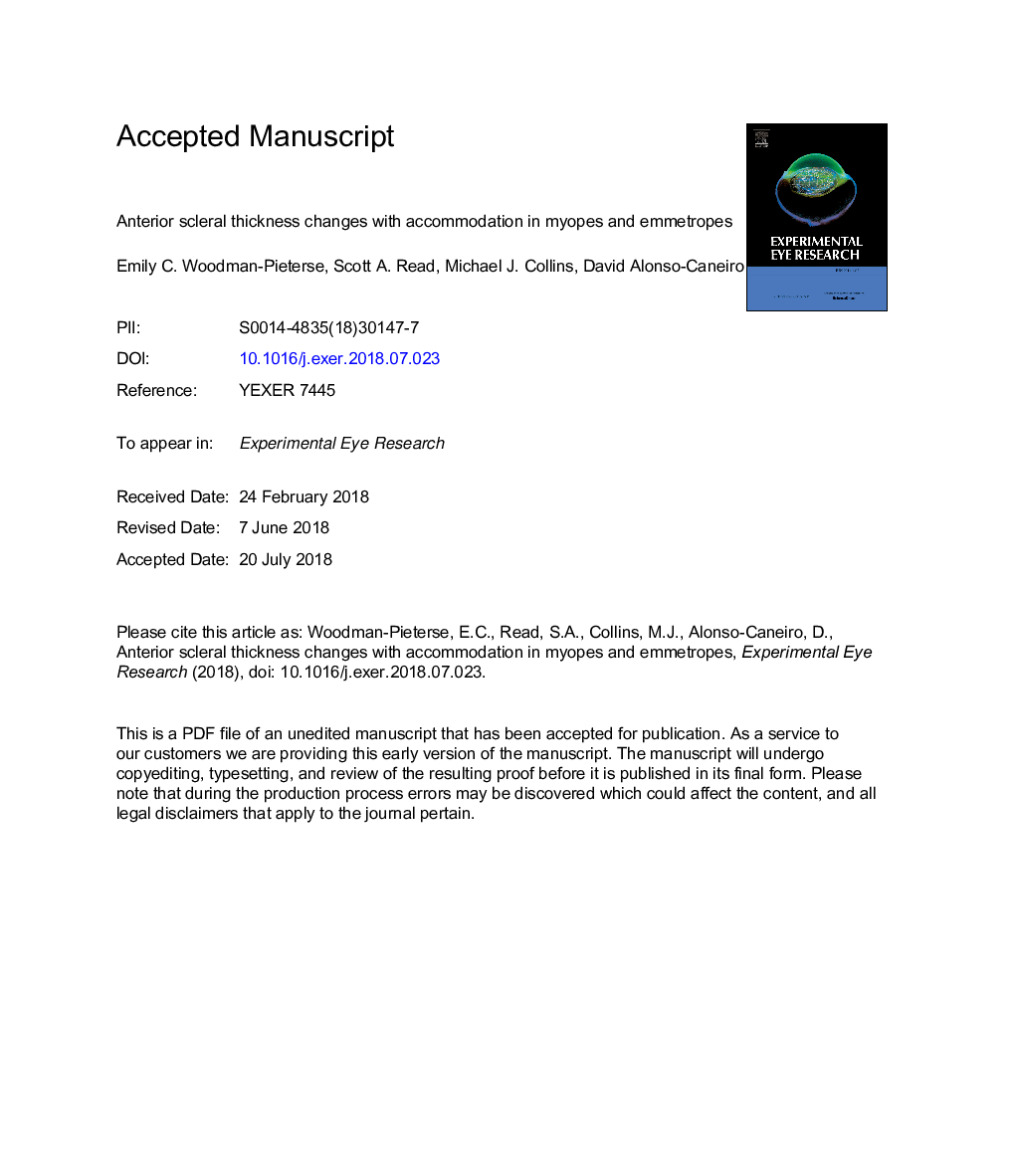| Article ID | Journal | Published Year | Pages | File Type |
|---|---|---|---|---|
| 8791858 | Experimental Eye Research | 2018 | 42 Pages |
Abstract
Although a range of changes in anterior segment structures have been documented to occur during accommodation, the quantification of changes in the structure of the anterior sclera during the accommodation process in human subjects has yet to be examined. This study therefore aimed to investigate the presence of short-term changes in anterior scleral thickness associated with accommodation in young adult myopic and emmetropic subjects. Anterior scleral thickness was measured in 20 myopes and 20 emmetropes (mean age 21â¯Â±â¯2 years) during various accommodation demands (0, 3 and 6 D) with anterior segment optical coherence tomography (AS-OCT). A Badal optometer was mounted in front of the objective lens of the AS-OCT to allow measurements of the anterior temporal sclera (1, 2 and 3â¯mm posterior to the scleral spur) to be obtained while fixating on an external accommodation stimulus. Anterior scleral thickness was not statistically different between refractive groups at baseline, but thinned significantly with the 6 D accommodation demand (â8â¯Â±â¯21â¯Î¼m, pâ¯<â¯0.05), and approached a statistically significant change with the 3 D demand (â6â¯Â±â¯20â¯Î¼m, pâ¯=â¯0.066). While both refractive groups thinned by a statistically significant amount at the 1â¯mm location with the 3 D demand; significant (pâ¯<â¯0.001) refractive group differences occurred at 3â¯mm, where the thinning found in the myopic group reached statistical significance with both the 3 D (â12â¯Â±â¯21â¯Î¼m) and 6 D (â19â¯Â±â¯17â¯Î¼m) demands, and the emmetropes showed no significant changes. This demonstrates the first evidence of a small but statistically significant thinning of the anterior sclera during accommodation. These changes were more prominent in myopes, particularly 3â¯mm posterior to the scleral spur. These regional differences may be associated with previously reported regional variations in ciliary body thickness between refractive groups, regional differences in the contraction of the ciliary muscle with accommodation, or differences in the response of the sclera to these biomechanical forces.
Related Topics
Life Sciences
Immunology and Microbiology
Immunology and Microbiology (General)
Authors
Emily C. Woodman-Pieterse, Scott A. Read, Michael J. Collins, David Alonso-Caneiro,
